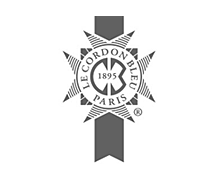There are several industries that tout skill and creativity as the sources of their finished products. Take, for example, the furniture industry. Let’s consider a handcrafted chair of an artisan furniture maker. It’s a simple design and for this story, let’s assume there are four pieces of wood plus a few nuts and bolts. These few and simple components compose the entire chair. It is simple, elegant, well designed, sturdy, handcrafted, original and uncomplicated. However, this simple piece takes a significant amount of time for the artisan to design, create and assemble.
Now, consider an impressive contemporary chair. This chair is the hottest trend, made with tons of moving pieces, using a multitude of patterns. This chair is extravagant-looking, from a distance, but hardly as sturdy or original as the first example and certainly not of the same class. It takes several computer prompts and a warehouse full of machinery and factory workers to generate the second chair and it has considerably more nuts and bolts than the first example. If you begin to look closer at the details and the artistic craft of each product, I firmly believe you would choose the handcrafted chair every time, because you will appreciate the quality and the commitment to produce simple, uncomplicated products, perfectly. And upon closer inspection, you’d come to realize the necessary complexity needed to produce a simple product in perfection.
This elaborate example helps me to bring into focus another comparable topic – food and the difference between complicated and simple. A recent conversation I had with a food writer had us tangled in our words but seeing eye to eye in a very stimulating discussion about food and what is simple and what is complicated.
So first, let’s talk simple. I see simple as two very different styles, using one word to describe them both. The first definition of simple is carefully selected products prepared simply with very little overkill, using tried and true techniques. For the masters of simple cooking, this is carried out effortlessly while simply allowing the ingredients to speak for themselves. These chefs never complicate the plate or the palate with clutter. This simple food is a crowd pleaser and will likely be incredibly sustainable for any chef’s career.
The other definition of “simple” that I see more often is the type I like least. This form of simple is the chef that describes their food as rustic, or urban. They don’t take the simple approach quite as serious, and with very little technique and a disregard for ingredient selection, they throw together a horrible copy of what could potentially be simple. Unfortunately, I fear we will continue to see more of this simple varietal if someone doesn’t speak up and communicate to chefs and cooks that this sort of simple is just silly and sloppy.
This style of “simple” has become a calling card for so many chefs that don’t have the techniques, experience and understanding solely of food. They want now what has taken their kitchen pinups decades to perfect. They are sampling what they have witnessed other chefs create, but they lack substance. It takes years for a cook to perfect simple. The four section, handcrafted wooden chair takes a career to perfect and a significant time commitment to each production, so that it’s elegant, consistent and safe to sit on.
So now that we’ve covered simple, what is complicated? Complicated, in the furniture industry, is a warehouse full of low quality lumber staged and ready to go through the one hundred step process of becoming a chair.
In the food industry, complicated comes easy to most and we see it often. Example: I want a burger and fries, and unless I’m dining at a true disaster, I’d like it to still seem like a burger and fries. I mean seriously – truffles, six different cheeses and marmalades? Fried vegetables and polenta infused with saffron and grilled? I’m in your restaurant, to eat a burger and fries, and the last thing on my mind is truffles and fiddlehead fern. This is what I confirm to be complicated. It’s a last ditch effort to appeal to the customer since there is a really great chance the chef either can’t cook a burger, has mediocre ingredients or is still playing around in the complicated version of his/her cooking career. It’s all smoke and mirrors when a menu is plagued with too many ingredients. The chef is either confused or trying to disguise his/her inability to cook for a potential guest. I laugh out loud when I read a Facebook post and the relationship status reads, “it’s complicated”. Because every time I see that I parallel it to menu writing, and imagine the chef fooling themselves into thinking that what people want is a ton of descriptions, ingredients and methods. Why? Have you fallen and hit your head? Your relationship status isn’t complicated, neither is your food. They are both transparent and silly.
I say this habitually, let’s textbook truss a chicken and roast it flawlessly before you write your bio for the “Food Overlord” career path. Don’t misunderstand what I’m saying. I firmly support chefs all over and I realize their occupation is that of a creative outlet. With creative inspired callings you kind of put yourself out there, and the success can be huge and rewarding but the criticism can be even larger and more damaging. So I’m not bashing you or discouraging your creativity. Just think of this commentary as a present on Christmas Eve – it’s an early gift. I’m saving you the shame of a later crash.
So just stop. Back away from the range and decide what you do best. Do us all a favor and show us your best dish, or best “chair”. I bet it’s not laced with fourteen different herbs and spices or forty-two pieces of wood.
It took me years to figure out a perfect method for searing fish. Now some of you may laugh at the idea that it took me years to learn to sear fish. Laugh all you want. My confidence and knowledge in searing fish is now simple. I can work any dish with perfectly seared fish and a few other basic ingredients and the plate feels elevated and there is little or nothing available to criticize. And my confidence in my abilities is legitimate. I’m finally self-reliant enough to have chosen a style of food that I feel is accurate to my ability and simple.
To get there, I had to learn, focus, and even fail at first before achieving success and deciding I wanted to be simple. It took using a melon baller and making fruit carvings, bad pairings, over-cooked proteins, seventeen micro greens on the plate with a coulis of something hideous to decide the complicated route wasn’t where I wanted to live. But I learned it all on the journey from complicated to simple. I started with one-hundred pieces of crap wood, and worked my way through the piles of lumber to discover I really only needed four solid boards and a little know-how.
There is a place for complicated. This isn’t about having everything just perfect and so. It’s about a style of being knowledgeable. There will always be a home for the mass produced chair. It’s a must. It is what it is. You can’t polish a turd. You can sure try, but someone will always discover it’s still a turd.
Like food, you can’t pretend to be a craftsman. You have either put the time in, and know what the heck you’re doing, or you don’t. So don’t ever say your food is rustic and simple, if it’s just sloppy and undeveloped.
So think simple and start simple. Create a perfectly chosen patty of ground beef, the mix I’m indifferent to – well maybe a little chuck and Shortrib – and certainly a homemade bun or the equivalent, my choice of good cheese, and smear of this and that is acceptable, some fresh crunchy veggies are nice for texture and my fries? Just season them with salt and pepper and make sure they’re not soggy.






























Ben, No, “You can’t polish a turd.” And here’s to non-soggy fries…I like mine cooked in duck fat and crispy. Loved your story